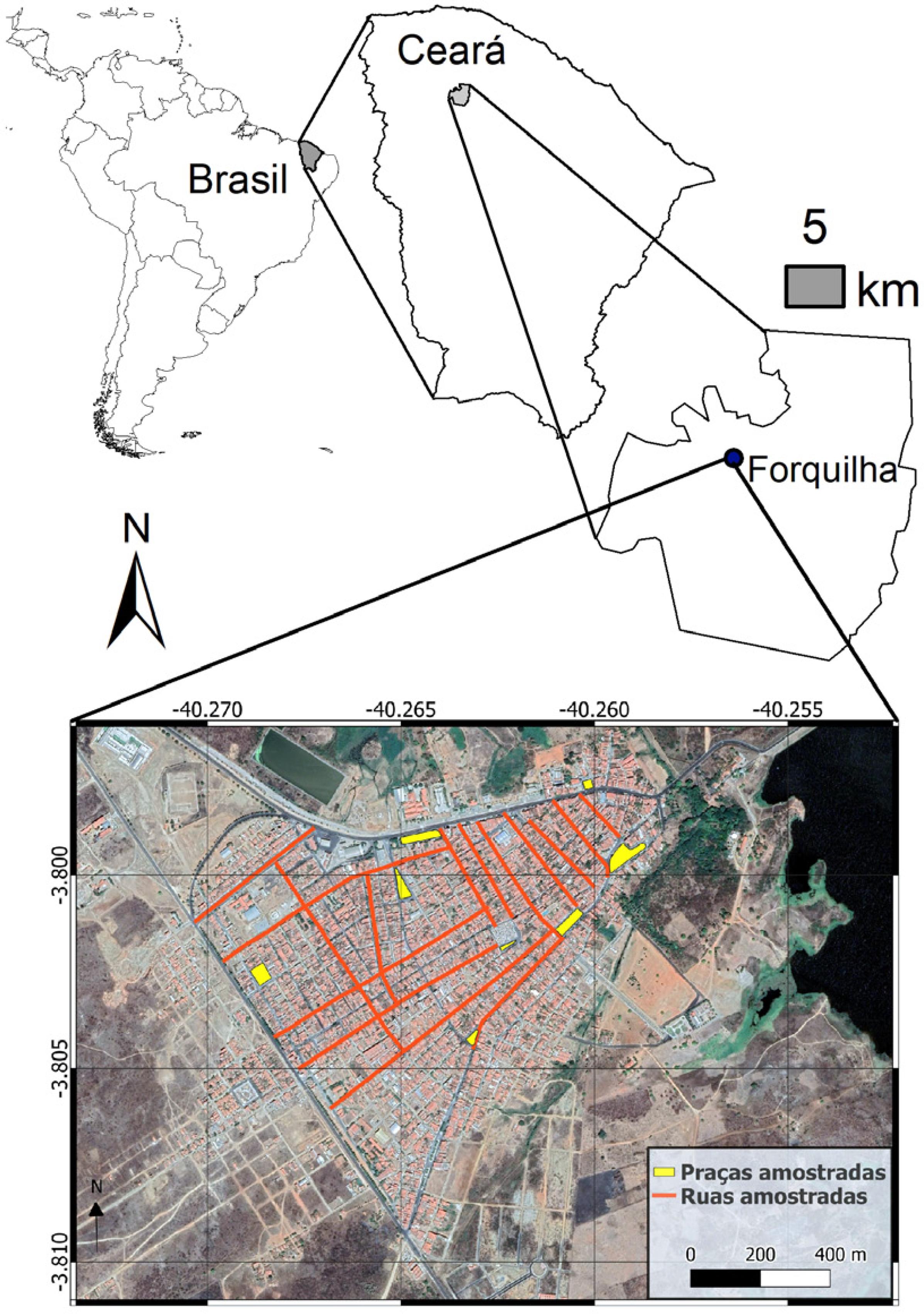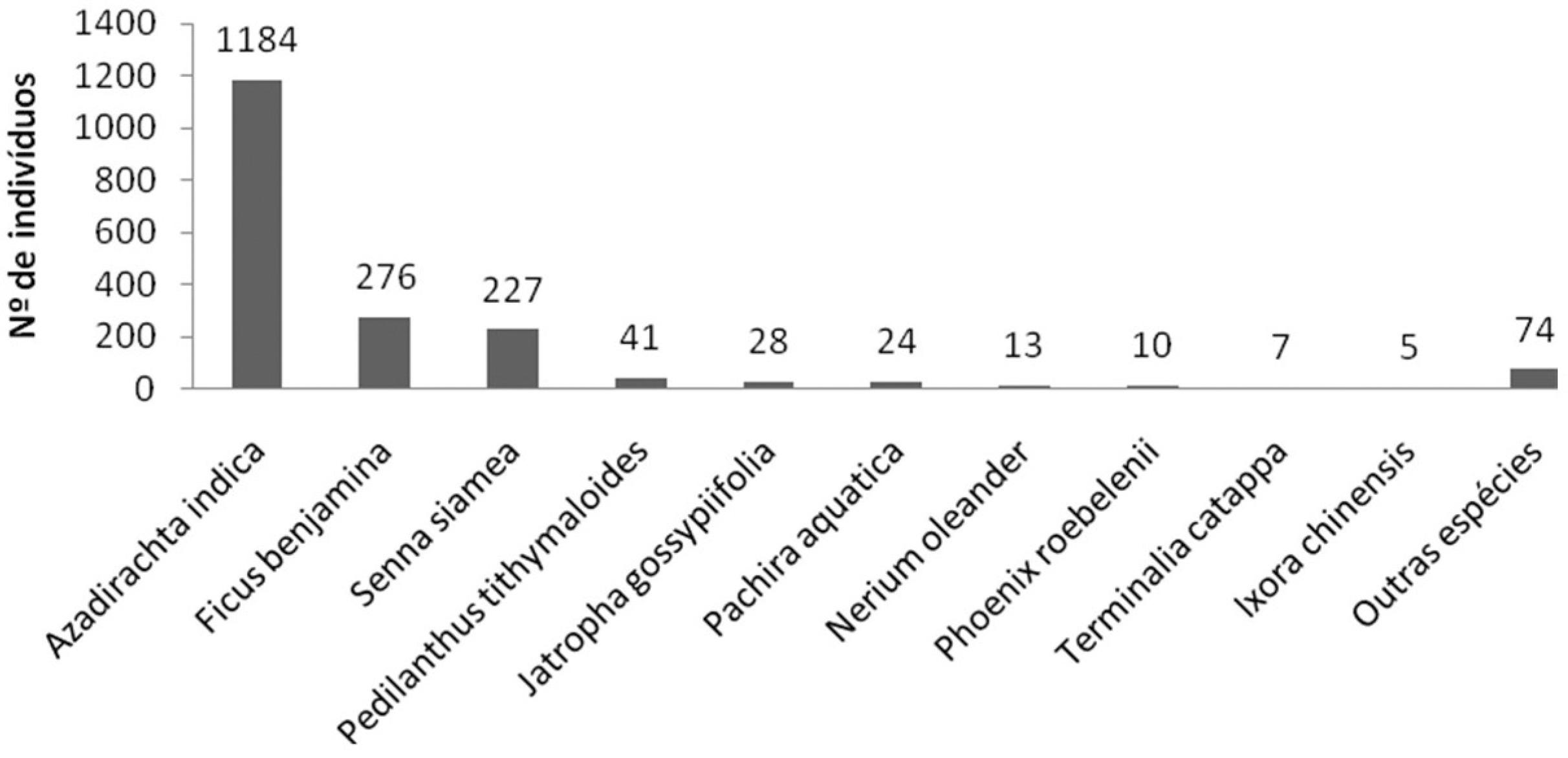Abstract
Despite the astonishing richness of native biodiversity in Brazil, it is common to see the urban landscapes composed mostly by exotic species, some of which are invasive. This results in little value being given to native plants by urban citizens. In this study we surveyed the urban forestry in the town of Forquilha, in the state of Ceará, Brazil. We aimed to assess how much native plants are being ignored in the composition of the town’s forestry. During a survey of tree and shrub species found in streets and squares of the town, we recorded 1,889 individuals belonging to 44 species. The most common species were the exotic Azadirachta indica (1,184 individuals) and Ficus benjamina (276) both native to Asia. Surprisingly, only three native species were found in our sample, totalling a mere five individuals. It is clear how much the urban forestry of Forquilha is composed predominantly by exotic species. We call here attention to the need for a greater valuation of the native flora in Brazilian cities.
Key words:
urban biodiversity; Brazil; exotic species; landscaping

 Fonte da imagem de satélite: Google Earth.
Fonte da imagem de satélite: Google Earth.


